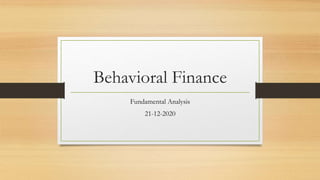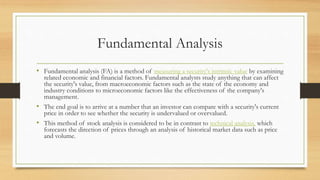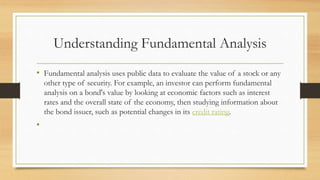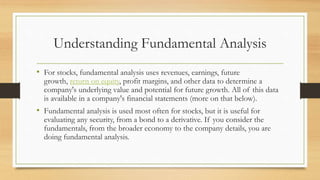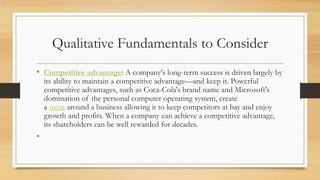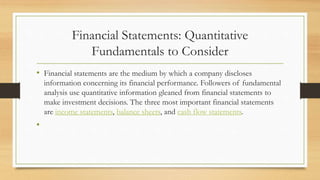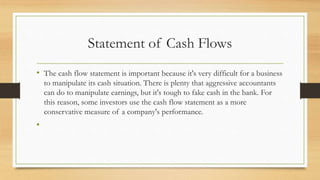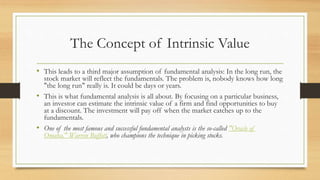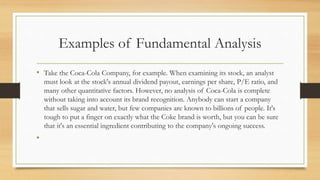The document discusses fundamental analysis, which examines financial and non-financial factors to determine a security's intrinsic value. It covers quantitative factors like financial metrics and qualitative factors like management quality. Analysts use public data on the economy, industry, and company to estimate a stock's fair value and identify undervalued or overvalued stocks. Key financial statements like the balance sheet, income statement, and statement of cash flows provide quantitative data for fundamental analysis.
